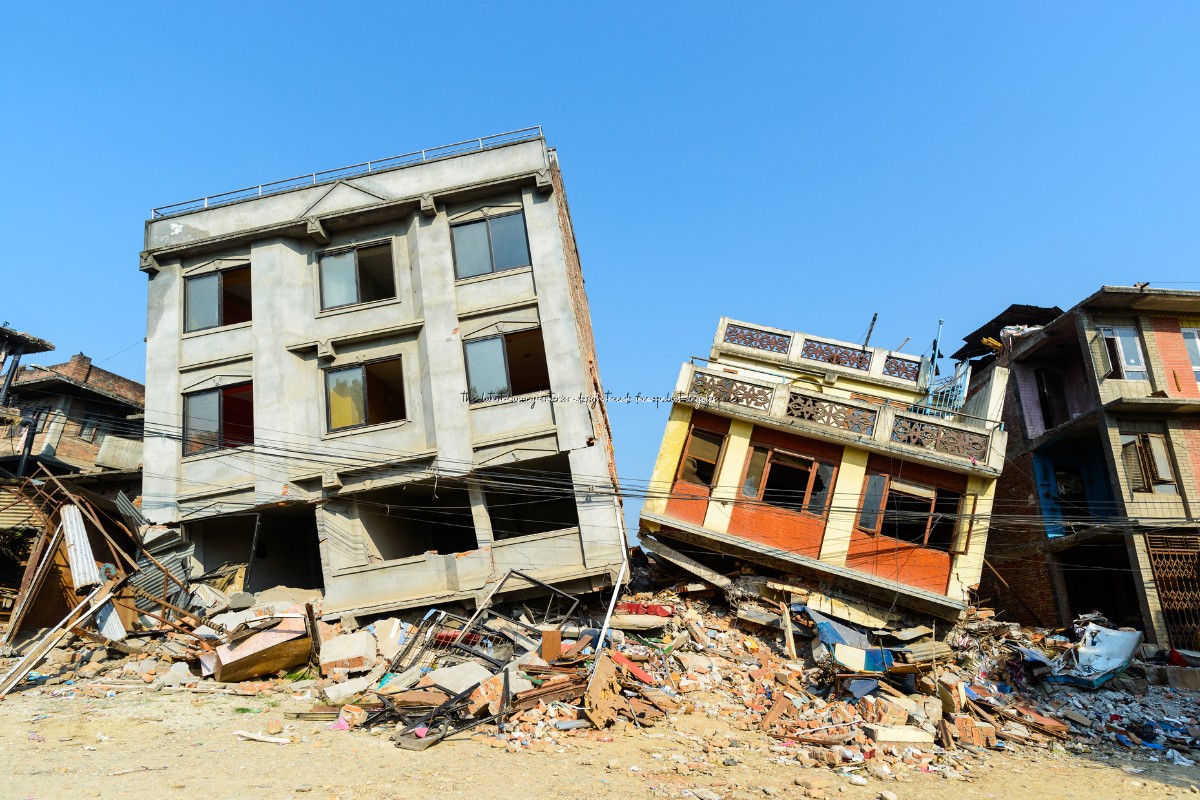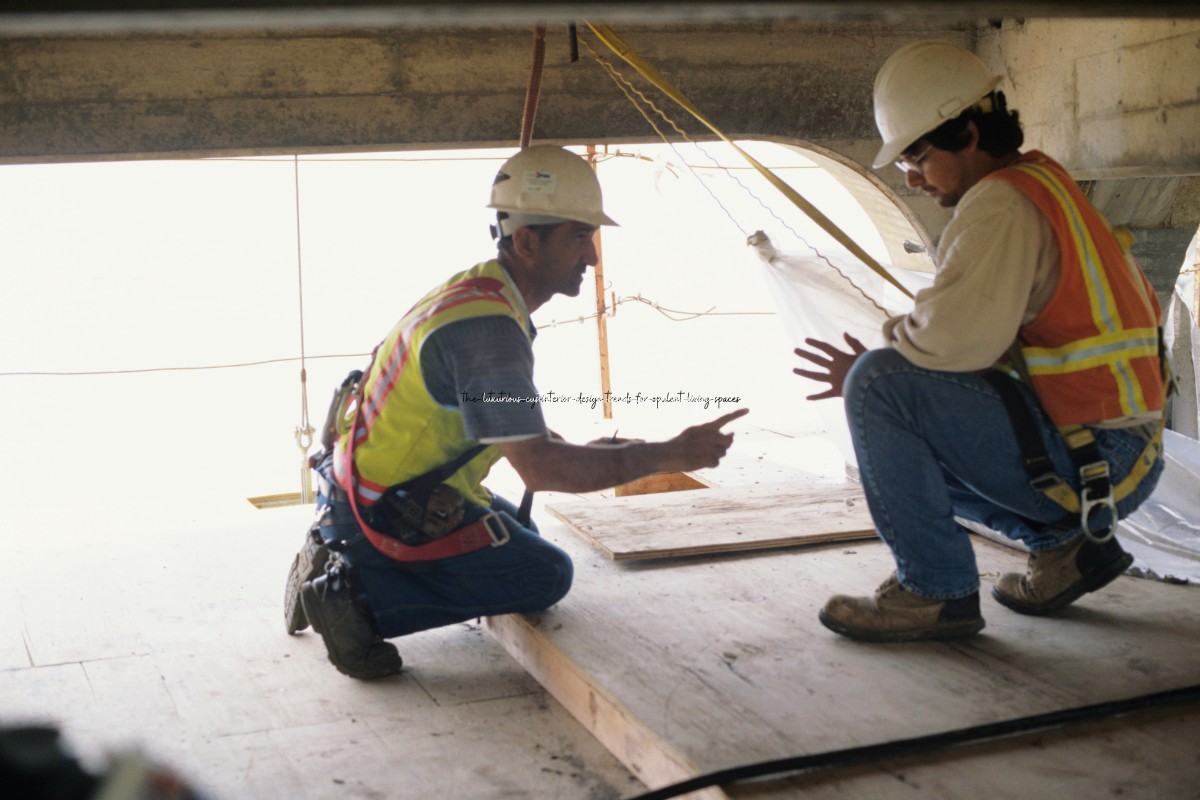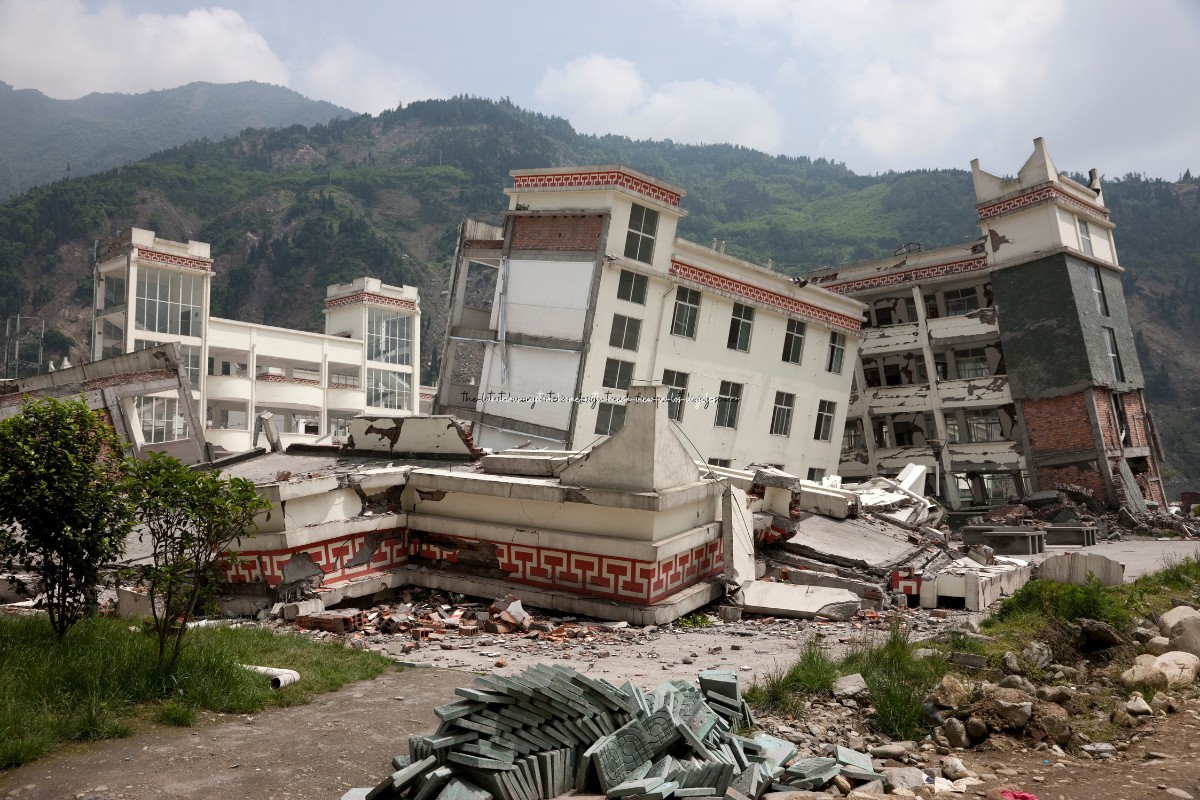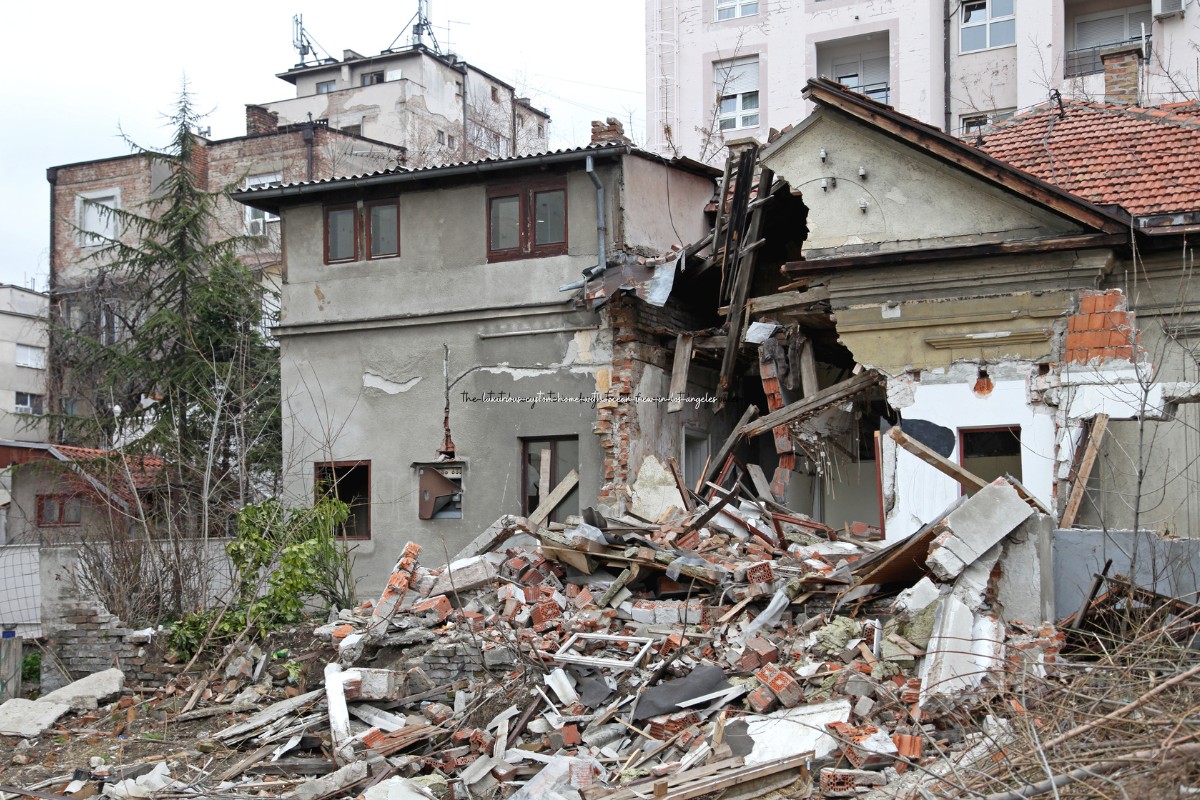As residents of a seismically active region, we understand the magnitude of the threats posed by earthquakes. In California, with a history rich in severe seismic events, safeguarding our homes from natural disasters is not just a recommendation; it’s a necessity. That’s why we take earthquake retrofitting seriously—it’s a commitment to personal safety, structural integrity, and long-term investment. By implementing seismic upgrades, such as house bolting and cripple wall bracing, we enhance earthquake safety measures, ensuring our homes stand a better chance against the earth’s tremors.
Seismic retrofit is not a mere choice; it’s an essential facet of earthquake preparedness. Our homes represent our life’s work, and we owe it to ourselves to protect this investment with diligence. Given the forecasted probabilities, we are looking at a near certainty of a significant seismic event in the next few decades. Acting now to reinforce our homes with earthquake retrofitting not only helps to shield our tangible assets but also serves as insurance for our peace of mind.
Key Takeaways
- Earthquake retrofitting is critical in California due to the high likelihood of seismic events.
- Seismic upgrades can significantly improve the stability of homes during an earthquake.
- Investing in retrofitting enhances safety and reduces potential structural damage.
- Retrofitting is both a protective measure and a financially wise strategy for homeowners.
- Being prepared for the inevitable is paramount in regions prone to earthquakes.
- Adhering to safety standards through retrofitting offers homeowners the comfort of security.
Understanding earthquake retrofitting
As we delve into the intricacies of earthquake retrofitting, it’s essential to recognize this process as a cornerstone of earthquake-resistant construction. Our homes are sanctuaries, and ensuring their stability in the face of seismic activity is not just a technicality; it’s a necessity for our safety.
What Is Earthquake Retrofitting?
Retrofitting techniques form the backbone of our defense against earthquakes. This method focuses on strengthening existing structures, specifically targeting weaknesses that could lead to cataclysmic failures during seismic events. With retrofitting, we employ various methods, such as house bolting and the addition of steel frame reinforcements, to fortify the bond between a building and its foundation, dramatically reducing the potential for catastrophic shift or collapse.
A key aspect of a successful seismic assessment is the tailored approach it necessitates, one that respects the unique architectural elements of each home and the specific seismic risks of its location. Our goal is to ensure earthquake reinforcement is both effective and reflective of the individual needs of every property we assess.

Evolution of Seismic Retrofit Standards
Seismic retrofit standards have not remained static; they are a testament to human ingenuity and adaptability. As we learn more from the disciplines of seismology, earthquake geology, and geodesy, our practices evolve. The fruits of our learning become integrated into building codes and retrofitting techniques, paving the way for increasingly resilient structures.
Our commitment to safeguarding our communities against the threats posed by natural disasters is unwavering. Earthquake retrofitting is not a mere service; it’s a measure of our dedication to protecting what is most precious—our homes and the lives within them.
Why Retrofitting Is Vital for Safety and Security
We understand that our homes are much more than just buildings; they are a sanctuary for our families and a shield against the unexpected forces of nature. When it comes to earthquake preparedness, seismic retrofitting stands as our frontline defense. Retrofitting implements earthquake safety measures that actively prevent our homes from catastrophic failure during seismic events. By adhering to these practices, we ensure the safety of our loved ones and the structural integrity of our abodes.
The seismic retrofit involves fortifying the connection between the structure of our homes and their foundations—a vital step in earthquake preparedness. This process not only helps in preventing potential displacement, but it also significantly diminishes the risk of injury or worse. The assurance that your home can withstand an earthquake provides a sense of security that is invaluable, especially in areas prone to such natural disasters.
Take, for example, the 2019 Ridgecrest earthquake in California, which revealed the vulnerabilities of many structures not equipped with modern seismic retrofitting. This event served as a stark reminder of the unpredictable nature of fault lines and the importance of being prepared for every possibility.
“Seismic retrofitting can literally be a lifesaver. It enhances the ability of a house to withstand an earthquake, ensuring it remains habitable and secure afterward.”
| Benefits of Seismic Retrofitting | Details |
|---|---|
| Increased Safety | Sturdy foundation attachments and reinforced structures lead to fewer injuries during earthquakes. |
| Peace of mind | Knowing your home is prepared for seismic activity delivers lasting comfort to homeowners. |
| Resilience | Retrofitting helps maintain a home’s structural integrity, ensuring it can be reoccupied post-earthquake. |
| Investment Protection | Preventative measures, like retrofitting, can save significant repair costs down the line. |
Earthquake preparedness through retrofitting is not just advisable; it’s a crucial practice that we cannot afford to overlook. By implementing seismic retrofit strategies, we’re not merely preserving the physical aspects of our properties; we’re also safeguarding the lives within. It is our collective responsibility to remain vigilant and proactive in adopting earthquake safety measures, as they are fundamental to our well-being in seismically active regions.
Seismic Vulnerabilities in Older Homes
When we look into the architectural past of our urban landscapes, we often find charm and history, but lurking beneath the surface of homes constructed before 1980 are potential seismic vulnerabilities. Many of these older structures were built before modern earthquake-resistant construction standards were established, leaving them susceptible to significant damage in the event of seismic activity.
The Risks of Pre-1980 Construction
Before modern seismic retrofit techniques became standard, homes were frequently designed without the earthquake reinforcement we now deem necessary. These residences typically lack the foundation bolting and cripple wall bracing that are crucial to maintaining structural integrity during an earthquake. It’s not just a matter of preserving property; it’s about safeguarding lives. Without seismic retrofits, these buildings are simply ill-equipped to withstand the earth’s unpredictable movements.
Case Study: 2014 South Napa Earthquake
The 2014 South Napa earthquake served as a wake-up call to the vulnerabilities of older construction. Homes that had not benefited from modern seismic upgrades, like earthquake-resistant construction, endured severe repercussions. The characteristic lack of bracing and foundational support made the difference between displacement and stability. Meanwhile, properties that had been retrofitted stood their ground with minimal damage, underscoring the value of undergoing a seismic retrofit—making it a clear imperative for homes at risk.
Earthquake Retrofitting Techniques
Our commitment to ensuring that structures are fortified against seismic threats leads us to a variety of retrofitting techniques. Each technique is specifically chosen to meet the unique structural requirements of a building, ensuring maximum earthquake resistance. Let’s delve into some of the essential retrofitting methods that are instrumental in enhancing the durability and safety of earthquake-prone construction.
Cripple wall bracing
Cripple-wall failure is a common cause of structural collapse during an earthquake. We address this vulnerability by applying cripple wall bracing, a technique that reinforces these walls, typically found in the crawlspace between the foundation and the first floor of a house. This seismic upgrade is a critical part of a comprehensive seismic assessment and retrofit strategy to ensure the integrity of the building’s lower support system.
Foundation Bolting
Fundamental to earthquake-resistant construction is the process of foundation bolting, which securely connects the structure to its foundation. This retrofitting method is crucial for preventing the horizontal or lateral movement that can occur during an earthquake, thereby substantially mitigating the risk of major structural damage or complete collapse.
Hillside and Soft Story Retrofit Solutions
Homes built on hillsides or with soft-story designs, such as those with open garage spaces beneath living areas, require specialized retrofit solutions. These structures are supported by targeted techniques such as the installation of steel frames and shear walls. A seismic assessment is key to identifying the particular needs of these buildings and employing the appropriate seismic upgrades. By focusing on these retrofitting techniques, we substantially enhance a structure’s ability to withstand the rigors of seismic activity.
The Financial Logic of Earthquake Retrofitting
As we delve into the realm of financial pragmatism, it becomes apparent that earthquake retrofitting offers more than just peace of mind. It is a strategic investment that plays a critical role in financial protection and investment security. Retrofitting not only aids in earthquake reinforcement but is also an investment in the longevity and stability of your property.
Long-term Savings: Retrofit vs. Repair
When evaluating the costs associated with seismic upgrades, the immediate thought is often the upfront expense. However, this perspective shifts dramatically once we consider the alternative—earthquake repairs. History has repeatedly shown that the cost of repairing a home after significant seismic damage dwarfs the expense of proactive retrofitting. In essence, retrofitting is not an expenditure but a shield that guards your finances against the unpredictability of earthquakes.
Earthquake Insurance Premium Reductions
Furthermore, retrofitting your home can lead to a reduction in earthquake insurance premiums. By implementing seismic upgrades, homeowners demonstrate a lower risk profile to insurance companies, often resulting in favorable adjustments to insurance costs. This not only enhances investment security but also translates to direct, tangible savings on an ongoing basis. As we continue to reinforce the structures we call home, it’s clear that the financial fabric of retrofitting is woven with the threads of foresight and fiscal wisdom.
| Investment in Retrofitting | Potential repair costs | Insurance premium savings |
|---|---|---|
| Upfront cost for seismic upgrades | Costs for post-earthquake repairs | Annual reduction in premiums |
| Long-term structural integrity | Potential loss of property value | Cumulative savings over time |
Earthquake Retrofitting: Code Compliance and Permits
As seasoned professionals in seismic retrofitting, we understand the significance of code compliance in protecting your home against earthquakes. Adhering to local building codes is not just a bureaucratic formality—it’s a safeguard for your property and your family. By obtaining all necessary permits before embarking on a retrofitting project, we ensure that each modification enhances the structural integrity of your home, aligns with safety standards, and withstands rigorous seismic assessment.

Retrofitting techniques will vary based on specific municipal regulations, so it’s vital to work with contractors who are well-versed in the local context. A seismic retrofit that meets all compliance criteria will not only shield you from potential legal complications but also fortify your living space against the ferocity of natural disasters. Homes that pass a seismic assessment bear the hallmark of resilience—a “green tag”—which signifies that they are habitable and secure post-earthquake.
- Investigation of local building codes relevant to seismic retrofitting.
- Applied for and secured the appropriate permits for construction.
- Execution of retrofitting works with strict adherence to the codes.
- Collaboration with certified inspectors for formal seismic assessment.
- Acquire the green tag certification, demonstrating code compliance and safety.
In summary, our commitment to code compliance and obtaining the right permits ensures that your seismic retrofit is not only effective but also legally sound. By keeping abreast of the latest in retrofitting techniques and regulations, we offer peace of mind along with enhanced earthquake resilience.
Seismic Assessment and Retrofitting Planning
At the core of earthquake preparedness is a detailed seismic assessment performed by professionals. This pivotal step lays the groundwork for planning seismic retrofits tailored to the specific structure of a property and the seismic trends of the locale. Our team contextualizes data to create seismic upgrades that resonate with your home’s architectural nuances and your safety priorities. This meticulous planning fosters not only diligent upgrades but also ensures the continuity of your daily life with minimal interference.
Comprehensive Seismic Assessments by Professionals
Seismic assessments delve into your building’s current capacity to withstand earthquakes. Experts examine the structural integrity and robustness of the foundation and evaluate retrofitting solutions to enhance your safety. Given the unpredictable nature of earthquakes, our objective is to arm you with knowledge and facilitate informed decisions regarding seismic upgrades. We emphasize the assessment’s precision, knowing its critical role in your home’s defense against seismic threats.
Developing a Retrofitting Plan Aligned with Your Needs
We pride ourselves on offering bespoke retrofitting plans that are conscious of your distinct requirements. Understanding that each home is unique, we sketch out a plan optimizing the balance between comprehensive earthquake preparedness and respect for the original aesthetics and functionality of your living space. The retrofitting plans are reflective of a partnership between our seismic retrofit expertise and your vision for a safe, enduring home environment.
| Assessment Aspect | Details | Impact on the Retrofitting Plan |
|---|---|---|
| Structural Analysis | Evaluation of the home’s foundation, walls, and overall construction integrity. | Defines the extent of seismic reinforcement needed. |
| Seismic Probability | Local seismic activity probabilities and historical data are reviewed. | It helps to prioritize areas of the home that may need more attention. |
| Retrofitting Techniques | Assessment of viable retrofitting options such as foundation bolting and cripple wall bracing. | Informs the selection of techniques that are both efficient and cost-effective. |
| Homeowner Preferences | Consideration of the homeowner’s desires and concerns regarding the retrofit. | The retrofitting plan respects the homeowner’s preferences while ensuring optimal safety. |
The Role of Skilled Contractors in Earthquake Retrofitting
When it comes to safeguarding your home against seismic activities, the significance of selecting qualified, professional contractors for earthquake retrofitting cannot be overstated. The expertise of these professionals plays a pivotal role in reinforcing your property’s resilience to earthquakes, elevating the importance of a well-chosen retrofitting partner.
Choosing the Right Retrofitting Partner: Premier Pro Builders
We understand the crucial decision homeowners face in selecting a trusted contractor for earthquake retrofitting. That’s why we recommend Premier Pro Builders, leading the field with their extensive experience and commendable track record in the Los Angeles area. Known for their meticulous adherence to seismic retrofit standards, they assure quality and durability in their retrofitting projects.
Essential Qualifications for a Retrofitting Contractor
Finding the right retrofitting partner encompasses more than just a simple search; it’s about ensuring they possess the qualifications and certifications required for high-standard work. A professional contractor’s qualifications often include specific training, knowledge of local building codes, and a clear history of successful retrofit accomplishments. With Premier Pro Builders, you gain access to a team that’s not just experienced but also highly capable of customizing retrofitting solutions to suit the unique needs of your home.
Contacting Premier Pro Builders at 818-300-4339 is your initial step toward securing top-notch professional contractors passionate about protecting your residence from the unpredictable forces of nature.
Understanding Retrofitting Costs and Financial Assistance
When considering the implementation of earthquake safety measures at home, it’s essential to evaluate the expected retrofitting costs and explore options for financial assistance. The journey towards ensuring seismic retrofit for your property involves understanding both the potential expenses and the available support that can make this process economically viable.
Average Costs of Earthquake Retrofitting for Homes
Typical costs for seismic retrofit projects can vary, with the average expense ranging from $3,000 to $7,000. These figures may be influenced by factors such as the size of your home, its age, architectural style, and the specific retrofitting strategies required. By investing in these critical upgrades, we not only enhance the safety of our living spaces but also counter future costly damages, demonstrating a proactive approach to safeguarding our households.
Financial Aid and Subsidy Programs
We recognize the significance of financial planning in upgrading your home’s earthquake resilience. Fortunately, there are financial assistance programs designed to support homeowners with the cost of seismic retrofits. Affording homeowners access to subsidies can significantly reduce the financial burden of retrofitting, encouraging broader adoption of earthquake safety measures. We advise researching and applying for such aid, which may turn the necessity of seismic retrofit into a more achievable goal for many.

Conclusion
In an age where seismic activity threatens the integrity of our homes, earthquake retrofitting emerges as a non-negotiable strategy for preserving our collective well-being and property. It is a holistic approach that bears the fruits of earthquake preparedness, keeping us steps ahead of natural calamities. By harnessing cutting-edge retrofitting techniques and thorough seismic assessments, we actively invest in the safety and longevity of our homes.
Indeed, retrofitting is accompanied by an outlay of funds, but we must view this expenditure through the lens of foresight and pragmatism. The costs we incur today are likely to prevent exorbitant repair expenses and irrecoverable losses tomorrow. It’s an act of safeguarding what is often our most valuable asset from the caprices of nature. With the skilled guidance of professionals such as Premier Pro Builders, the retrofitting process is demystified, leaving no room for doubt about the efficacy and compliance of their work.
The reality of residing in seismically active territories like California mandates a proactive stance. Our decision to retrofit is emblematic of strength and adaptation—a testament to the unyielding human spirit that prioritizes resilience above all else. As we continue to learn, adapt, and reinforce, we forge an environment where safety is stitched into the very fabric of our homes, gifting us and our loved ones with the assurance that we are protected when the earth beneath us shifts.
FAQ
What Is Earthquake Retrofitting?
Earthquake retrofitting, often referred to as seismic retrofitting, is a process that reinforces structures to make them more resistant to seismic forces during an earthquake. This involves techniques to strengthen the connection between a building and its foundation, like house bolting, crippled wall bracing, and installing steel frames, aiming to prevent the structure from collapsing or shifting during seismic events.
How Have Seismic Retrofit Standards Evolved?
Over the years, seismic retrofit standards have advanced with a better understanding of seismology, geology, and engineering. Innovations have resulted in more effective retrofit techniques that are tailored to the specific seismic risk profiles of various regions and the architectural features of individual buildings. These developments enhance the safety and durability of retrofitted structures in the face of earthquakes.
Why is retrofitting essential for home safety and security?
Retrofitting is crucial because it drastically increases the likelihood of a building enduring an earthquake with minimal damage, thereby ensuring the safety of occupants and the security of the property. By reinforcing the structural integrity of homes, retrofitting reduces the risks of injury, loss of life, and property damage during seismic events.
What Are the Risks of Pre-1980 Construction?
Buildings constructed before 1980 often lack the seismic safety features required by modern building codes. These homes may not be adequately braced, bolted to their foundations, or designed to withstand shaking from earthquakes, making them vulnerable to structural failure during a quake.
Can you describe the impact of the 2014 South Napa earthquake on non-retrofitted homes?
The 2014 South Napa earthquake underscored the vulnerabilities of non-retrofitted homes. Many buildings that had not been reinforced experienced significant damage or displacement, while those that had undergone seismic upgrades fared much better, sustaining minimal if any, impact.
What Are Some Common Earthquake Retrofitting Techniques?
Common retrofitting techniques include cripple wall bracing, which prevents the collapse of short walls above the foundation; foundation bolting, which secures a home to its foundation; hillside home retrofits, like diagonal bracing for steep posts; and soft story retrofits, using steel frames and plywood to improve strength where homes have living spaces over garages.
How Can Retrofitting Result in Long-Term Financial Savings?
Retrofitting can avert or lessen damage from earthquakes, which in turn reduces the costs for future repairs and restorations. Also, by securing a home against seismic events, owners may benefit from reduced earthquake insurance premiums, leading to long-term financial savings.
Why is code compliance important in earthquake retrofitting?
Code compliance is critical to ensuring safety and adherence to legal regulations. Compliant retrofitting meets established standards and quality assurances that deliver the intended level of protection during seismic events, maintaining both the structural integrity and legality of the enhancements.
How Does a Comprehensive Seismic Assessment Work?
A comprehensive seismic assessment involves professionals evaluating a structure’s current condition, the expected seismic activity in the area, and determining the retrofitting solutions most suitable to the building’s design while addressing its specific vulnerabilities. This assessment forms the basis of an effective and individualized retrofitting plan.
Why is choosing the right retrofitting contractor important?
Choosing the right contractor is vital because the quality of retrofitting work can significantly affect the structure’s safety during an earthquake. A qualified and experienced contractor like Premier Pro Builders will have the necessary certifications and a proven track record, ensuring that the retrofitting is done correctly and to the highest safety standards.
What Are the Average Costs of Earthquake Retrofitting for Homes?
The average cost of earthquake retrofitting can range from $3,000 to $7,000, although this may vary depending on the size and specific structural challenges of the home. This expense is often viewed as a prudent investment compared to the potential costs post-earthquake repairs could incur.
Are there financial aid and subsidy programs available for retrofitting?
Yes, there are various financial assistance and subsidy programs offered to homeowners to help offset the costs of retrofitting. These programs are designed to make seismic upgrades more affordable, decreasing the initial financial barrier for those seeking to enhance the safety and resilience of their homes.

